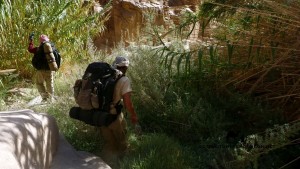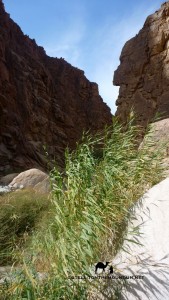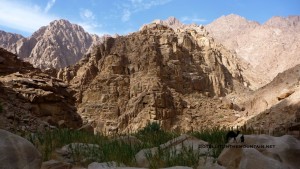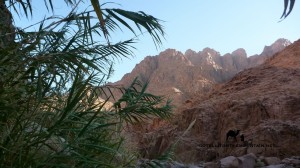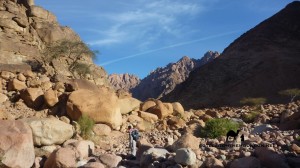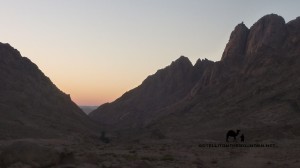March 24, 2015
Sinai: five beautiful oases
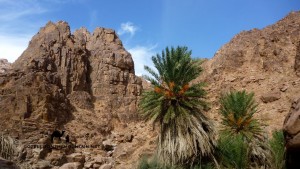 This blog is mostly about mountains. I love getting to the tops of mountains. I love how they represent the last point between the earth and the sky; the last place we can go and the most natural end to a journey we could ever make. If there’s a single moment though – a single, iconic moment – that rivals getting to the top of a mountain, it’s arriving in an oasis. And I mean arriving in an oasis after days in the desert. When you get to an oasis, suddenly, there’s shade. Suddenly there’s water. You can hear the birds. You can smell the fires. You get handed tea. It’s that moment of knowing you’re out of the wilderness; that, just for a moment, there’s sanctuary and you can breathe easy.
This blog is mostly about mountains. I love getting to the tops of mountains. I love how they represent the last point between the earth and the sky; the last place we can go and the most natural end to a journey we could ever make. If there’s a single moment though – a single, iconic moment – that rivals getting to the top of a mountain, it’s arriving in an oasis. And I mean arriving in an oasis after days in the desert. When you get to an oasis, suddenly, there’s shade. Suddenly there’s water. You can hear the birds. You can smell the fires. You get handed tea. It’s that moment of knowing you’re out of the wilderness; that, just for a moment, there’s sanctuary and you can breathe easy.
When you go to one by jeep you’ll see it; but you’ll never really understand what that little clump of green means in the wider context of a desert. Oases are made special by what’s around them and by the journey you make to them.
I’ve already talked about my five favourite wadis in the Sinai. Here are my five all time favourite oases too. What are yours?
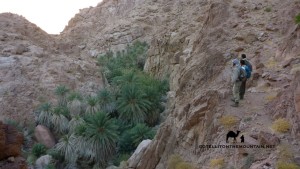 1. EIN HAYALLA My favourite of all, I first spotted this from high on Jebel Madsus; far below, it looked like an emerald gem buried in the red rocks. It’s a cluster of green palms in one of the heads of Wadi Kabrin, with deep water pools and trickling creeks. There are bamboo tunnels and fallen tree trunks you can walk across like bridges. Long ago, this oasis was on a pilgrim route to St Katherine; you can still find Byzantine pottery and crucifixes etched on the rocks. One amazing way to walk here is via Wadi Hebran, from the coast. There’s a similarly spectacular route via Wadi Sig, but it’s longer. And harder. You can also walk in via a place called Baghabugh, from St Katherine.
1. EIN HAYALLA My favourite of all, I first spotted this from high on Jebel Madsus; far below, it looked like an emerald gem buried in the red rocks. It’s a cluster of green palms in one of the heads of Wadi Kabrin, with deep water pools and trickling creeks. There are bamboo tunnels and fallen tree trunks you can walk across like bridges. Long ago, this oasis was on a pilgrim route to St Katherine; you can still find Byzantine pottery and crucifixes etched on the rocks. One amazing way to walk here is via Wadi Hebran, from the coast. There’s a similarly spectacular route via Wadi Sig, but it’s longer. And harder. You can also walk in via a place called Baghabugh, from St Katherine.
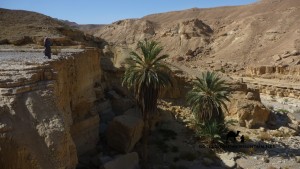 2. EIN SHEFALLA You won’t find many folks who’ve been here. Half way up a deserted wadi that drains El Gardood – a high, foreboding plateau that flanks the Gulf of Aqaba – it’s just a couple of palms below a vertical cliff. It’s not the lush jungle of Ein Hayalla. But the surroundings are much harsher. And that’s why this little patch of green means so much here. It has a themila too: a hole where you can dig down to find water. Walking to Ein Shefalla isn’t easy. You can do it from Wadi Guseib, on the Gulf of Aqaba coast near Bir Sweir. It involves a tough hike over a hard-to-navigate plateau for which, like all the oases here, you’ll need an experienced Bedouin guide.
2. EIN SHEFALLA You won’t find many folks who’ve been here. Half way up a deserted wadi that drains El Gardood – a high, foreboding plateau that flanks the Gulf of Aqaba – it’s just a couple of palms below a vertical cliff. It’s not the lush jungle of Ein Hayalla. But the surroundings are much harsher. And that’s why this little patch of green means so much here. It has a themila too: a hole where you can dig down to find water. Walking to Ein Shefalla isn’t easy. You can do it from Wadi Guseib, on the Gulf of Aqaba coast near Bir Sweir. It involves a tough hike over a hard-to-navigate plateau for which, like all the oases here, you’ll need an experienced Bedouin guide.
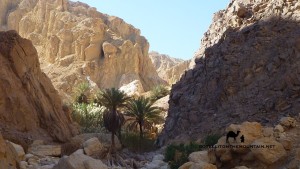 3 EIN GUSEIB This little oasis huddles at the end of a rugged coastal wadi, below the El Gardood plateau. It’s a haven of green with palm trees, bamboo, pools and creeks that run through the sands. It’s a beautiful spot that you can get to with a walk from the beach. From Bir Sweir on the Gulf of Aqaba coast – roughly 25km north of Nuweiba – follow Wadi Guseib inland from the beach. Otherwise, you can do it at the end of a longer trail passing three of the oases here. Start near Ras Shetan and from here walk to Moiyet Melha (see below). After this you can climb up the El Gardood plateau, crossing it to Ein Shefalla and down its rugged coastal cliffs to Ein Guseib and the Gulf of Aqaba.
3 EIN GUSEIB This little oasis huddles at the end of a rugged coastal wadi, below the El Gardood plateau. It’s a haven of green with palm trees, bamboo, pools and creeks that run through the sands. It’s a beautiful spot that you can get to with a walk from the beach. From Bir Sweir on the Gulf of Aqaba coast – roughly 25km north of Nuweiba – follow Wadi Guseib inland from the beach. Otherwise, you can do it at the end of a longer trail passing three of the oases here. Start near Ras Shetan and from here walk to Moiyet Melha (see below). After this you can climb up the El Gardood plateau, crossing it to Ein Shefalla and down its rugged coastal cliffs to Ein Guseib and the Gulf of Aqaba.
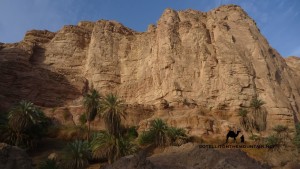 4 MOIYET EL MELHA They say a ghoola – a sort of evil witch – guards this oasis, maiming or killing anybody who traps its animals, cuts its trees or tries to claim the oasis for himself. Some are scared of her; others see her as a benevolent force of nature. A guardian who protects its animals and trees against human greed. Moiyet el Melha is a long line of green palms that grow at the bottom of high cliffs, where water seeps out. Getting here isn’t too tricky: it’s at the end of a long coastal wadi called Wadi Melha, which starts near the beach camps of Ras Shetan. Half way along is Wadi Wishwashi, a spectacular ravine. The oasis is near the end of the wadi; a beautiful spot to sleep.
4 MOIYET EL MELHA They say a ghoola – a sort of evil witch – guards this oasis, maiming or killing anybody who traps its animals, cuts its trees or tries to claim the oasis for himself. Some are scared of her; others see her as a benevolent force of nature. A guardian who protects its animals and trees against human greed. Moiyet el Melha is a long line of green palms that grow at the bottom of high cliffs, where water seeps out. Getting here isn’t too tricky: it’s at the end of a long coastal wadi called Wadi Melha, which starts near the beach camps of Ras Shetan. Half way along is Wadi Wishwashi, a spectacular ravine. The oasis is near the end of the wadi; a beautiful spot to sleep.
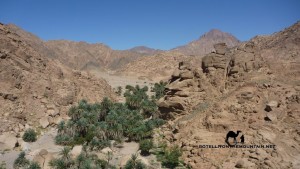 5 EIN KIDD The only oasis in this list where you’ll find people. Sometimes, I like having places to myself. Other times, people add something. After days in the wilderness, it can be good to talk again. At least, it can with the right people. Getting stuck in an oasis with the wrong people would be a problem. Ein Kidd is in the territory of the Muzeina tribe and the Bedouin here are hospitable in the old school traditions. The oasis itself is a cluster of palms in Wadi Kidd, a long wadi that connects the St Katherine region with the coastal ranges. It’s a sort of half way house on treks between St Katherine and Sharm and it can also be tied into longer treks from the Jebel Umm Shomer area.
5 EIN KIDD The only oasis in this list where you’ll find people. Sometimes, I like having places to myself. Other times, people add something. After days in the wilderness, it can be good to talk again. At least, it can with the right people. Getting stuck in an oasis with the wrong people would be a problem. Ein Kidd is in the territory of the Muzeina tribe and the Bedouin here are hospitable in the old school traditions. The oasis itself is a cluster of palms in Wadi Kidd, a long wadi that connects the St Katherine region with the coastal ranges. It’s a sort of half way house on treks between St Katherine and Sharm and it can also be tied into longer treks from the Jebel Umm Shomer area.
Check out the Google Map below, to pinpoint the oases. Remember, these spots are in remote, rugged mountain country and it’s essential to take a Bedouin guide who knows what they’re doing. Check out my Directory of the Best.
